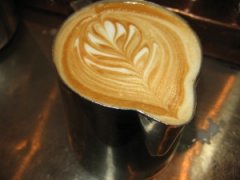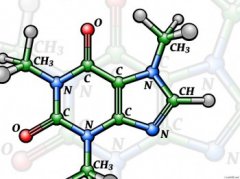List of caffeine grading systems

For professional baristas, please follow the coffee workshop (Wechat official account cafe_style)
According to the evaluation data of the EU Scientific Committee on Food, it is recommended that the average person's daily caffeine intake should be less than 300mg, which should not have adverse effects on health. Domestic doctors also suggest that coffee drinkers should consume less than 300mg per day.
We drink coffee, tea and refreshing drinks every day, each of which contains caffeine, which will accidentally exceed 300mg. If we taste too much, it will lead to insomnia, headaches, anxiety and restlessness.
Therefore, since August 1, 2006, the Consumer Protection Council of the Executive Yuan has implemented a caffeine labeling system, inviting coffee sellers on the market to mark their caffeine content for consumers' attention.
The coffee sold on the market today can be divided into freshly brewed coffee such as Starbucks, 85C, 7-11City Coffee, and family Brown coffee. Etc., with canned coffee such as Benazon coffee, Wayne coffee, Brown coffee … According to the classification of the Consumer Insurance Association, etc., the signs are as follows:
First, the red, yellow and green marks of freshly brewed coffee are marked:
"Red": caffeine content is above 200--300mg or 300mg.
"Yellow": caffeine content 100--200mg.
"Green": caffeine content below 100mg.
Second, the caffeine label of the packaged beverage:
Liquid drinks with containers or packages, caffeine content is marked:
If the caffeine content is higher than or equal to 20mg/100ml (20 mg caffeine per 100ml), the caffeine content is marked by the milligrams of caffeine per 100ml. For the allowable range of error, please confirm the quality control in accordance with the factory regulations.
If the caffeine content is lower than 20mg/100ml, the caffeine content is marked as "below 20mg/100mL".
The caffeine content of the "instant small packaged coffee" products that need to be brewed shall be marked by the total amount of caffeine in each serving (mg). For the allowable range of error, please confirm the quality control in accordance with the factory regulations.
Drinks such as coffee, tea and cocoa, which contain less caffeine than 2mg/100mL, are labeled as "decaf".
Caffeine warning signs:
Liquid drinks with containers or packages containing caffeine higher than or equal to 20mg/100mL should be marked with a prominent font and color next to the caffeine content sign, with the warning "Daily limit of 300mg, caution for children and pregnant women".
For "instant coffee in small packages" (to be brewed), products with a total caffeine content of more than 50 mg (mg) should be marked with a prominent font and color next to the caffeine content label, with the warning "Daily limit 300mg, be careful for children and pregnant women".
In addition, if the caffeine content is lower than 20mg/100mL, operators are not required to make warning signs at this stage, and the Department of Health will immediately conduct a risk prevention assessment of its impact on human health.
Important Notice :
前街咖啡 FrontStreet Coffee has moved to new addredd:
FrontStreet Coffee Address: 315,Donghua East Road,GuangZhou
Tel:020 38364473
- Prev

My mother doesn't have to worry about me wasting milk anymore.
Professional baristas exchange please pay attention to coffee workshop (Wechat official account cafe_style) coffee pull flower, English is Latte Art, meaning the art of latte, with milk bubble in the latte to draw a pattern, so that coffee in addition to the unique taste, aroma, but also add visual beauty, from the eyes to feel yearning for coffee. Now it's not just lattes that can pull flowers, except for cappuccinos.
- Next

The love-hate relationship between coffee and caffeine how roasting and brewing change caffeine content
Professional barista Communication Please pay attention to the Coffee Workshop (Wechat official account cafe_style) Coffee can boost your spirits, but in moderation, as too much caffeine can be harmful to the body. Caffeine is a xanthine alkaloid compound, which is a kind of stimulant. Chemical formula: C8H10N4O2 (trimethylxanthine) action: natural insecticide: found in more than 60 plant species
Related
- Beginners will see the "Coffee pull flower" guide!
- What is the difference between ice blog purified milk and ordinary milk coffee?
- Why is the Philippines the largest producer of crops in Liberia?
- For coffee extraction, should the fine powder be retained?
- How does extracted espresso fill pressed powder? How much strength does it take to press the powder?
- How to make jasmine cold extract coffee? Is the jasmine + latte good?
- Will this little toy really make the coffee taste better? How does Lily Drip affect coffee extraction?
- Will the action of slapping the filter cup also affect coffee extraction?
- What's the difference between powder-to-water ratio and powder-to-liquid ratio?
- What is the Ethiopian local species? What does it have to do with Heirloom native species?

